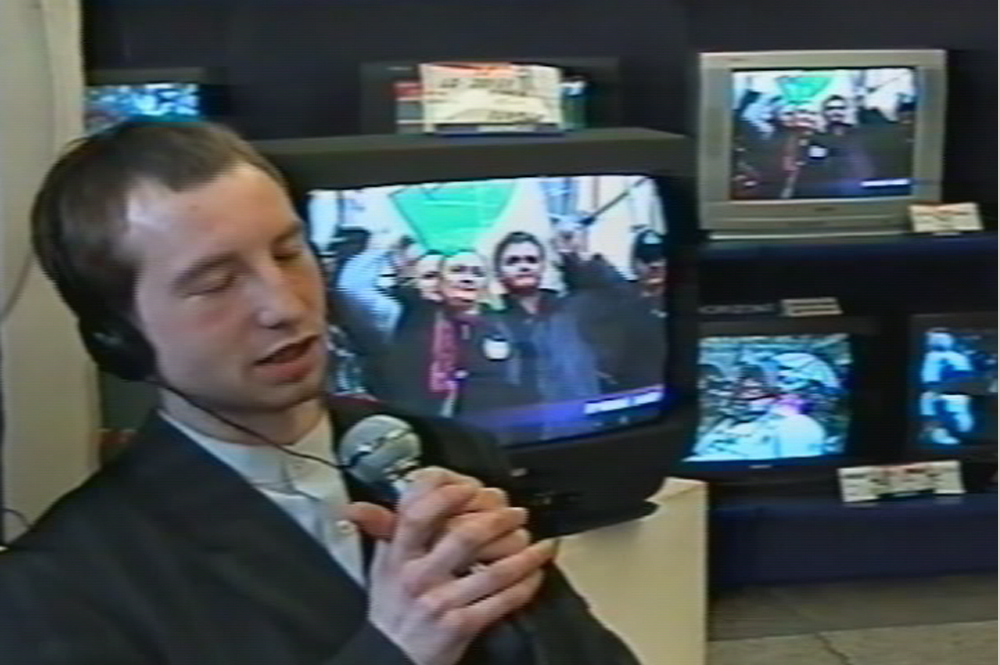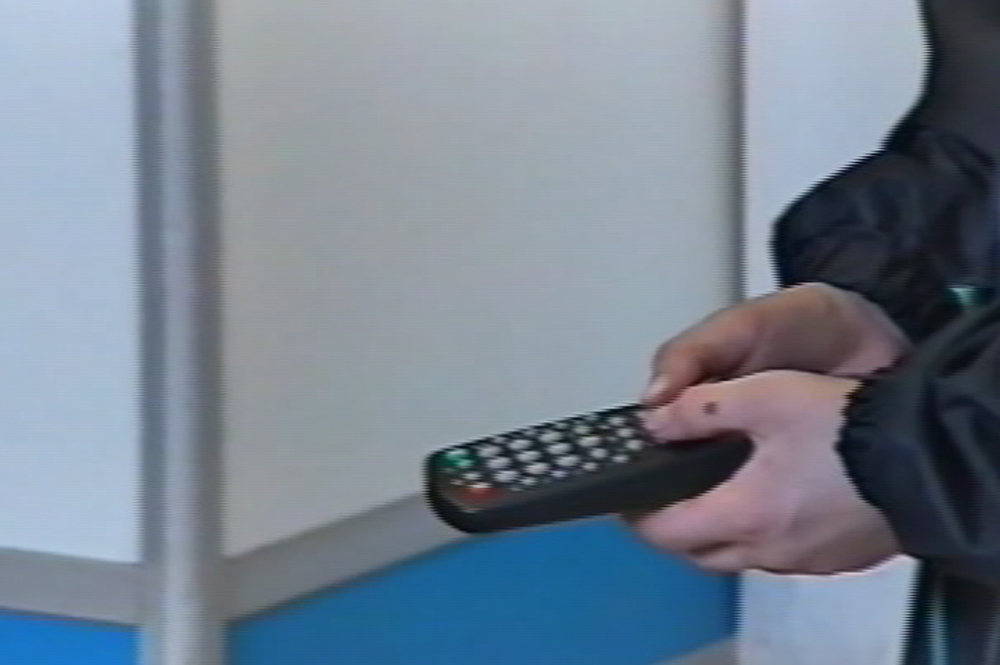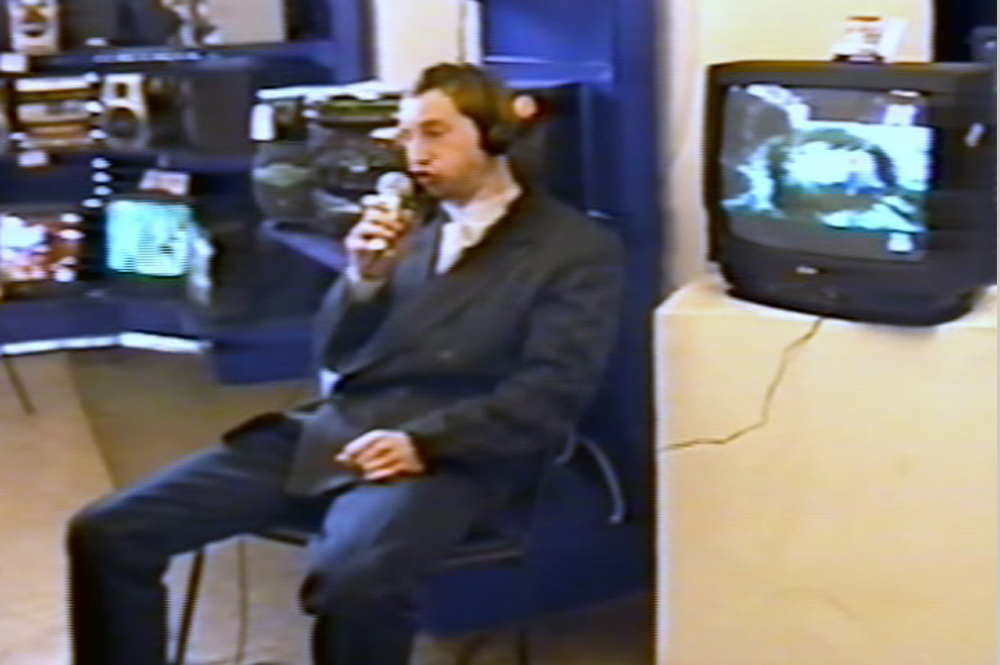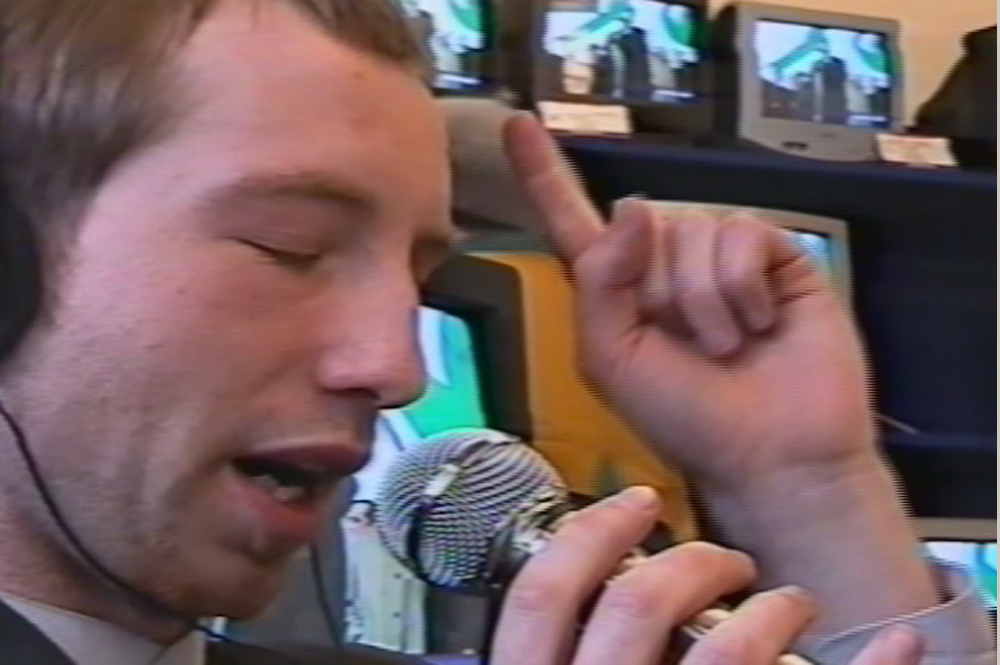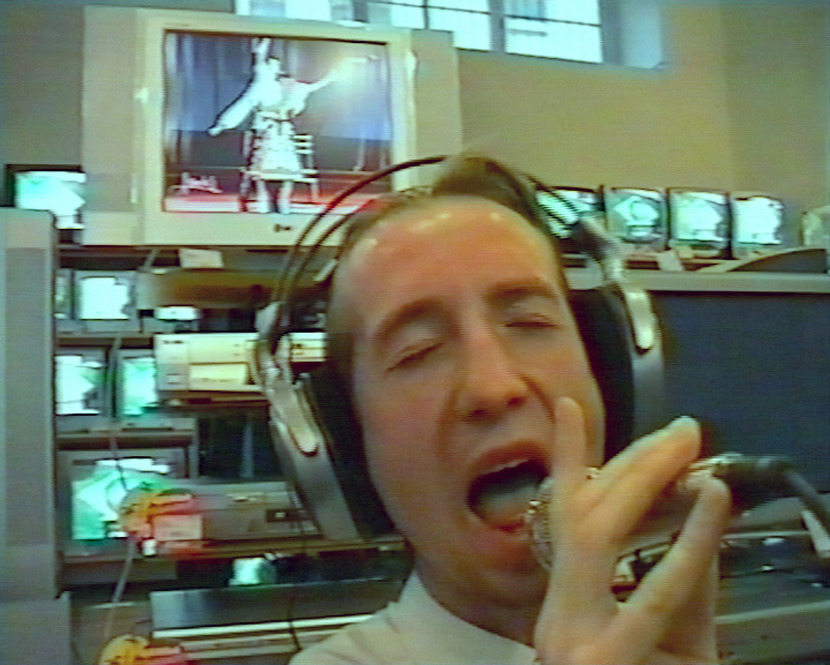Spring Sisyphus-training
Within a few winter months of 1997-1998, I grew in the street an icy lump, watering it every day with cold water. With each day, the lump overgrew with new layers of ice crust; it became more infused with ice, and turned each time larger, heavier and harder.
At the same time, I built a wooden structure akin to a seesaw. In the first day of spring, I placed the lump in the exhibition space of the Reserve Palace in Pushkin, leaving it at the base of one of the levers of the wooden seesaw. On each side of seesaw, I placed an aluminum bucket and a casual rag for floor cleaning. I undressed to the waist, and began to roll the icy lump up the seesaw, until it outweighed the seesaw, and the lump slid down to the opposite side. I slid down after the icy lump too. Once on the opposite side, I wiped with a rag the melted ice from the floor, squeezing it into the bucket. Then, again, I rolled up the lump. In the center of the lever, the lump again began to outweigh the seesaw, turning it over and the rolling down to the starting point of performance. Again, I wiped from the floor the thawed ice and squeezed out anew the water into the bucket.
And all repeated again. The lump was rolled up the seesaw, keeling over to the opposite side, then the water was wiped and pressed into the buckets. The lump rolled up again in the opposite direction. The action lasted for several hours, until the ice completely melted, and all the water of the melted lump was collected back in the buckets.
“How much water has flowed from the time of ascent of Sisyphus until the time of his fall? And how much water went under the bridge at the moment of his triumph?”
(The statue or a documentation of performance are not preserved.)
